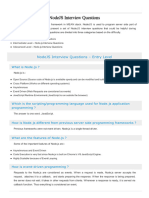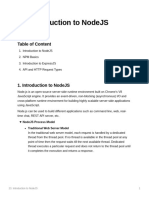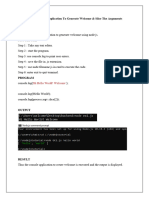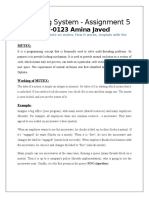0% found this document useful (0 votes)
10 views35 pagesNode Notws With Examples
Node.js is an open-source, cross-platform runtime environment for executing JavaScript outside of the browser, primarily used for backend development. It features a single-threaded model with event looping, a vast package ecosystem via npm, and asynchronous capabilities, making it efficient for real-time applications. The document covers various aspects of Node.js, including modules, global objects, the file system, HTTP module, and built-in modules like URL and OS.
Uploaded by
ravillakrishna0225Copyright
© © All Rights Reserved
We take content rights seriously. If you suspect this is your content, claim it here.
Available Formats
Download as PDF, TXT or read online on Scribd
0% found this document useful (0 votes)
10 views35 pagesNode Notws With Examples
Node.js is an open-source, cross-platform runtime environment for executing JavaScript outside of the browser, primarily used for backend development. It features a single-threaded model with event looping, a vast package ecosystem via npm, and asynchronous capabilities, making it efficient for real-time applications. The document covers various aspects of Node.js, including modules, global objects, the file system, HTTP module, and built-in modules like URL and OS.
Uploaded by
ravillakrishna0225Copyright
© © All Rights Reserved
We take content rights seriously. If you suspect this is your content, claim it here.
Available Formats
Download as PDF, TXT or read online on Scribd
/ 35





















































































